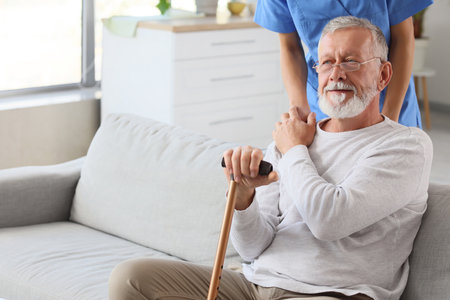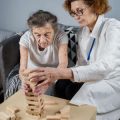Understanding Joint Replacement Surgery in Older Adults
Joint replacement surgery has become more common among older adults in the United States, especially as people are living longer and staying active later in life. This type of surgery is often recommended when a joint, like the hip or knee, is damaged by arthritis, injury, or years of wear and tear. Joint replacement can help reduce pain and improve mobility, making it easier for older adults to return to their daily activities.
Common Types of Joint Replacement Procedures
The two most frequent joint replacements in older adults are hip and knee replacements. Here’s a quick overview:
| Type of Joint Replacement | Description | Why Its Common in Older Adults |
|---|---|---|
| Hip Replacement | Damaged parts of the hip joint are replaced with artificial parts (prosthetics). This helps relieve pain and improve function. | Osteoarthritis and fractures are common reasons for hip replacements as people age. |
| Knee Replacement | Worn-out or damaged knee surfaces are replaced with metal and plastic parts. This helps restore movement and reduce discomfort. | Knee osteoarthritis becomes more frequent with age, leading to stiffness and pain that limit activity. |
Why Joint Replacements Are Increasing in the U.S. Aging Population
In the United States, the number of joint replacement surgeries has been rising over the past few decades. There are several reasons for this trend:
- Aging Baby Boomer Generation: As this large group grows older, more people need joint replacements due to age-related wear and tear.
- Desire for Active Lifestyles: Many older Americans want to stay active—walking, golfing, gardening, or even playing with grandkids—and joint pain can get in the way.
- Medical Advances: Improved surgical techniques and better artificial joints mean safer procedures and quicker recovery times for patients.
- Better Access to Healthcare: More people have access to orthopedic specialists and physical therapy services than ever before.
The Impact on Everyday Life
For many older adults, having a joint replaced means a chance to live without chronic pain and regain independence. That’s why understanding the basics of these surgeries is important—not just for patients but also for families helping loved ones through recovery. The next step after surgery focuses on early mobility and exercise, which play a key role in successful outcomes.
2. Benefits of Early Mobility After Surgery
Getting up and moving soon after joint replacement surgery is one of the best things older adults can do for their recovery. Doctors, nurses, and physical therapists in the United States all agree that early mobility—meaning getting out of bed and walking or doing gentle exercises as soon as it’s safe—can make a big difference in how well someone heals. Let’s look at some important benefits:
Reduces the Risk of Complications
Staying in bed for too long after surgery can cause several problems. Here’s a table to show some common risks and how early movement helps:
| Complication | How Early Mobility Helps |
|---|---|
| Blood clots (DVT) | Walking gets your blood flowing, lowering the risk of dangerous clots forming in your legs. |
| Pneumonia | Sitting up and moving helps keep your lungs clear, making it easier to breathe and fight off infections. |
| Bedsores | Changing positions and moving prevents pressure from building up on your skin. |
Promotes Better Healing
Early movement helps your new joint start working as it should. Gentle exercise brings more blood to the area, which delivers oxygen and nutrients that are essential for healing. It also helps reduce swelling and stiffness.
Encourages Independence
The sooner you start moving, the faster you’ll regain strength and confidence in using your new joint. Practicing daily activities like standing up, walking, or going to the bathroom on your own leads to greater independence. Many older adults find that this boosts their mood and motivation during recovery.
Everyday Activities Matter
Your rehab team will help you practice simple tasks that matter most in everyday American life—like getting in and out of a car, climbing a few steps at home, or walking to the mailbox. Starting these routines early makes it easier to get back to your normal lifestyle sooner.

3. Safe Exercise Strategies for Recovery
Why Exercise Matters After Joint Replacement
After a joint replacement, moving your new joint safely is one of the best ways to heal, regain strength, and get back to your favorite activities. The right exercises help older adults improve mobility, prevent stiffness, and reduce the risk of falls.
Evidence-Based Exercises for Older Adults
| Exercise | How It Helps | How To Do It Safely |
|---|---|---|
| Ankle Pumps | Improves circulation and reduces swelling in legs | While lying down, flex and point your toes up and down slowly; repeat 10-15 times every hour |
| Heel Slides | Increases knee and hip flexibility | Lying on your back, slowly slide your heel toward your buttocks, then straighten; repeat 10 times per leg |
| Quad Sets | Strengthens thigh muscles (important for walking) | Sit with your leg straight; tighten thigh muscle by pressing knee down toward bed; hold for 5 seconds, relax, repeat 10 times per leg |
| Standing Marches | Improves balance and hip mobility | Hold onto a sturdy surface; slowly lift each knee as if marching in place; start with 10 reps per side |
| Sit-to-Stand Practice | Builds functional strength for daily activities like getting out of chairs or cars | Sit on a sturdy chair; push up to stand using legs (not arms if possible), then sit down slowly; repeat 5-10 times |
Tips for Starting and Progressing Activities Safely
- Follow Your Care Team’s Advice: Always check with your surgeon or physical therapist before starting new exercises.
- Pace Yourself: Start slow and increase repetitions or resistance gradually as you feel stronger.
- Watch for Pain: Some discomfort is normal, but stop if you feel sharp pain or swelling increases.
- Use Assistive Devices: Don’t hesitate to use walkers or canes if recommended, especially during early recovery.
- Stay Consistent: Gentle daily movement is more effective than occasional intense workouts.
- Exercise With Supervision: If possible, do your exercises with a physical therapist who can monitor your form and progress.
- Add Variety: As you recover, include low-impact activities like walking, cycling on a stationary bike, or swimming (after incision heals) to keep things interesting and work different muscles.
Your Recovery Timeline May Look Like This:
| Time After Surgery | Main Focus of Exercise |
|---|---|
| First Week | Ankle pumps, quad sets, gentle range of motion movements in bed/chair |
| Week 2-4 | Add sit-to-stand practice, standing marches, short walks with support |
| Month 1-3 | Increase walking distance, add resistance bands or light weights as advised by therapist |
If You’re Unsure—Ask!
If you have any questions about which exercises are right for you or how to do them correctly, don’t hesitate to reach out to your healthcare team. They’re there to help you move safely on your journey to recovery.
4. Overcoming Barriers to Early Mobility
Addressing Common Obstacles
Many older adults face challenges after joint replacement surgery that can make early mobility and exercise difficult. Understanding these barriers—and how to overcome them—can make a big difference in recovery. Here’s a look at some of the most common obstacles, along with practical solutions for patients, caregivers, and healthcare providers in the U.S.
Pain Management
Pain is one of the main reasons people hesitate to move after surgery. However, gentle movement can actually help reduce discomfort over time. If pain is keeping you from getting up and about, talk to your doctor or physical therapist about safe pain management options. This might include medication, ice packs, or alternative therapies like guided relaxation.
Tips for Managing Pain
| Who | What To Do |
|---|---|
| Patient | Take pain medicine as prescribed, use cold packs, try deep breathing exercises |
| Caregiver | Help with medication reminders, set up a comfortable area for rest and movement |
| Healthcare Provider | Adjust pain management plan if needed, educate on safe activity levels |
Fear of Falling
The risk of falling is a real concern after joint replacement, but staying in bed too long can make muscles weaker and actually increase this risk. Using assistive devices like walkers or handrails can help you feel more secure. Physical therapists often teach safe ways to move and balance.
Ways to Reduce Fall Risk
- Wear non-slip shoes or socks
- Clear walkways of clutter and rugs
- Ask for help when standing or walking at first
- Practice balance exercises with supervision
Lack of Family Support
Some older adults may not have family nearby to help during recovery. In the U.S., there are community resources that can step in, such as home health aides, volunteer programs, or local senior centers. Telehealth visits also allow healthcare providers to check in virtually.
Options for Extra Help
| Resource Type | Description/How It Helps |
|---|---|
| Home Health Services | Nurses or aides visit at home to assist with mobility and care needs |
| Community Programs | Senior centers offer group exercise classes and social support |
| Telehealth Appointments | Virtual check-ins with doctors or therapists for guidance and encouragement |
The Role of Communication and Teamwork
A successful recovery takes teamwork between patients, families, and the medical team. Open communication helps everyone stay on the same page about goals and concerns. Don’t hesitate to ask questions or share worries—it’s normal to need reassurance and support as you regain your strength.
5. Resources and Support Systems in American Communities
After joint replacement surgery, having access to the right resources and support systems can make a big difference in recovery for older adults. Across the United States, many local organizations, healthcare providers, and community programs are available to help seniors regain mobility and confidence after surgery.
Rehabilitation Services
Many hospitals and clinics offer specialized rehabilitation services tailored for joint replacement patients. These services often include:
- Physical Therapy: Medicare often covers outpatient physical therapy sessions to help restore strength and movement.
- Occupational Therapy: Therapists assist with daily activities, making it easier to return to normal routines at home.
- Home Health Care: For those who have difficulty traveling, some agencies provide in-home rehabilitation services.
Community Programs That Support Recovery
There are several nationwide programs designed specifically for older adults recovering from joint replacement surgery. These programs provide safe environments, experienced instructors, and group motivation.
| Program | Description | How to Access |
|---|---|---|
| SilverSneakers | A fitness program included with many Medicare plans; offers gym access and senior-friendly exercise classes. | Check eligibility at SilverSneakers.com |
| Medicare-Covered Physical Therapy | Covers medically necessary physical therapy prescribed by your doctor after surgery. | Ask your healthcare provider about local options or visit Medicare.gov |
| Parks & Recreation Senior Programs | Local community centers often offer gentle exercise classes like chair yoga or water aerobics. | Contact your city’s Parks & Rec department or visit their website for schedules |
| Area Agencies on Aging (AAA) | Provide information about local resources, transportation, meal delivery, and support groups. | Find your local AAA at Eldercare Locator |
Finding Local Help Near You
If you need assistance finding support in your area, consider asking your healthcare provider for recommendations. Social workers or case managers at your hospital can also connect you with local services. Many insurance plans have online directories of participating facilities and therapists as well.
Tips for Getting Started:
- Bring a family member or friend to appointments for extra support.
- If transportation is a challenge, ask about ride services covered by Medicare or local nonprofits.
- Stay connected with others who have had similar surgeries through support groups or online forums.
Your Community Can Help You Succeed
You don’t have to recover alone—using these resources will help you stay active, independent, and confident as you heal from joint replacement surgery.

